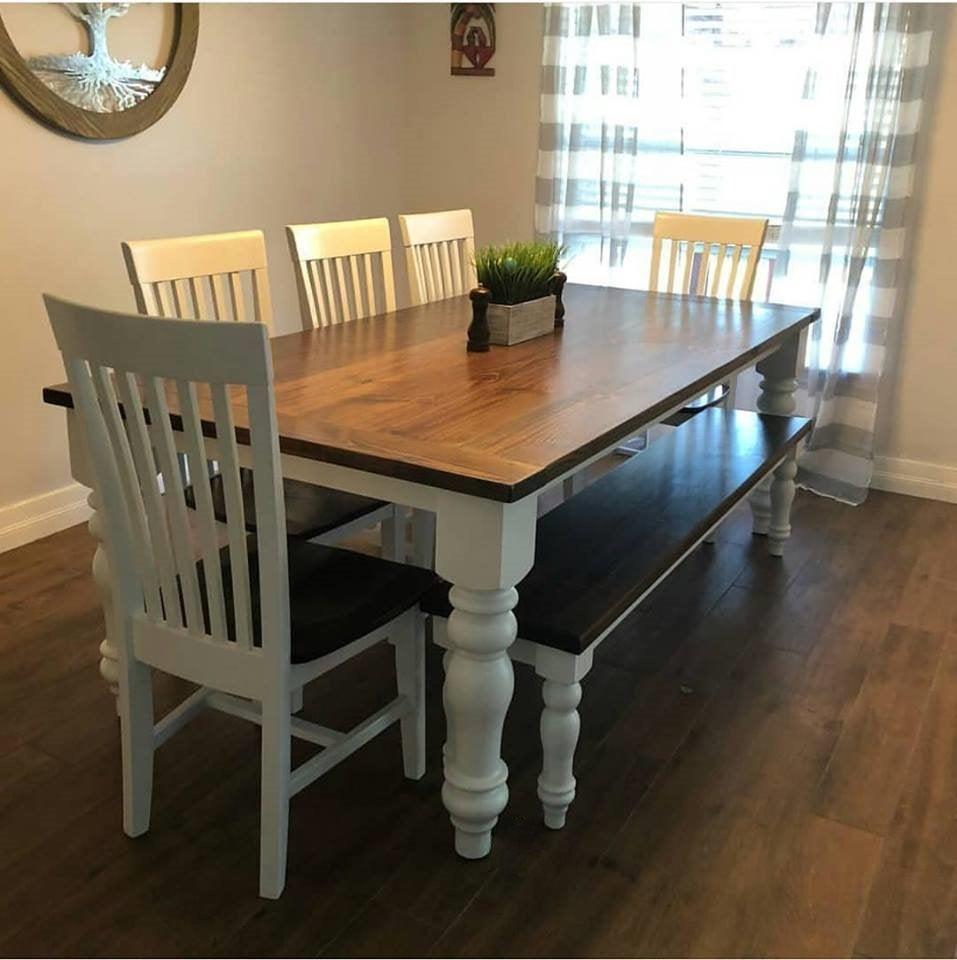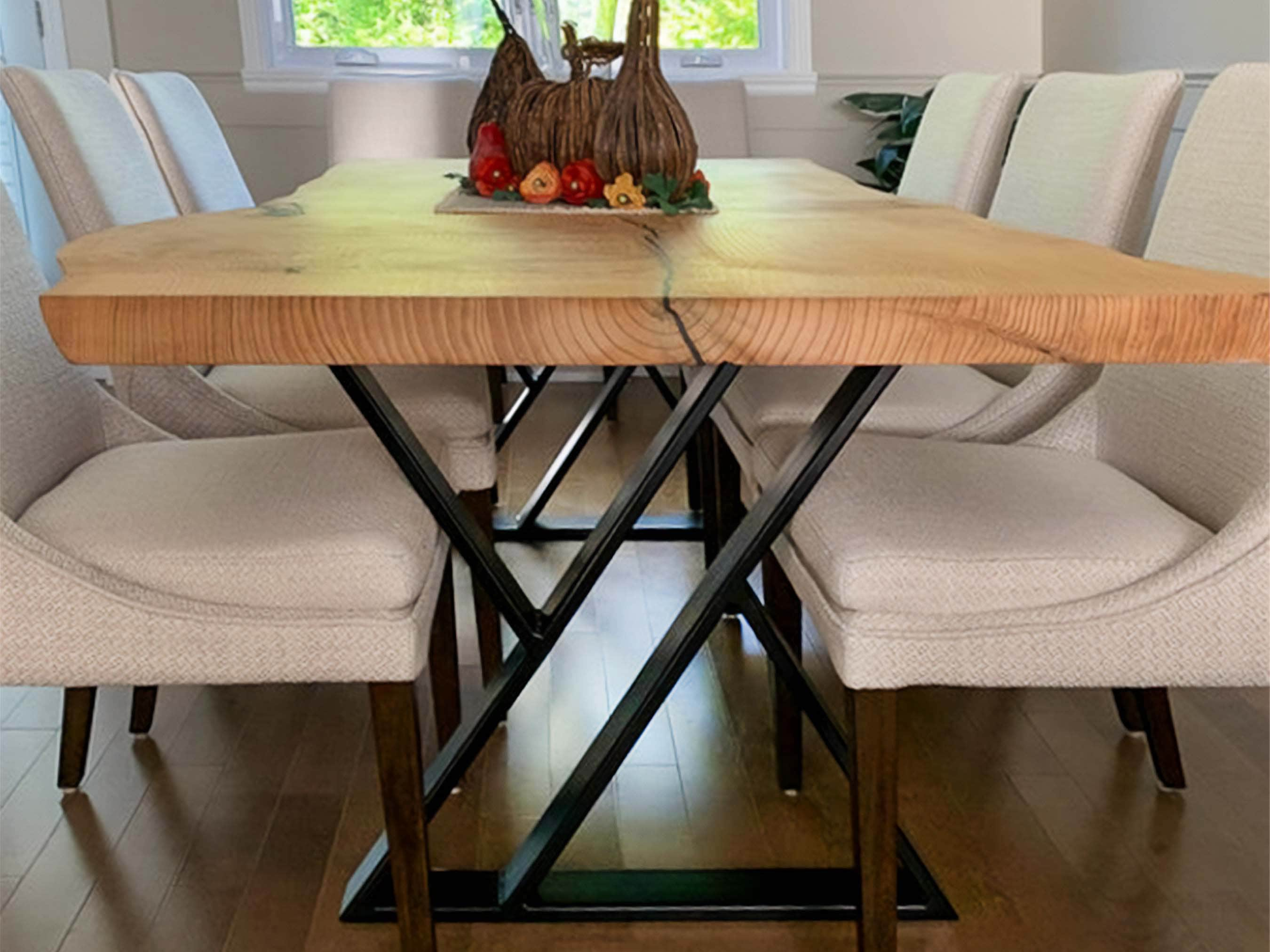One-of-a-kind Dining Room Table Legs to Transform Your Eating Location
One-of-a-kind Dining Room Table Legs to Transform Your Eating Location
Blog Article
Selecting the Perfect Eating Table: What Styles Job Best for Your Home?
Selecting the ideal eating table for your home can be a nuanced process that stabilizes visual appeals and functionality. Whether your room leans towards typical sophistication, modern minimalism, rustic appeal, or commercial stylish, the variety of designs available can provide to varied tastes. Each layout provides one-of-a-kind benefits and obstacles that can either enhance or interrupt your dining area's consistency. Understanding exactly how various products, shapes, and dimensions interact with your existing decoration is crucial. To navigate these selections effectively and discover a table that absolutely complements your home, think about the adhering to aspects thoroughly.
Examining Your Room
Reviewing the dimensions and format of your eating area is a vital very first step in selecting the perfect dining table. Begin by determining the length and width of the space, representing entrances, home windows, and various other building functions that might influence table placement. This guarantees that your table not only fits however likewise permits comfortable motion around it.
Think about the variety of individuals you typically entertain. A table should accommodate your household's day-to-day demands while offering sufficient flexibility for occasional guests. Generally of thumb, designate a minimum of 24 inches of table width per person to ensure a comfortable dining experience.
It's additionally vital to maintain ideal clearance around the table. Preferably, there must be at the very least 36 inches in between the table side and walls or various other furnishings, allowing simple access and activity. For rooms where chairs with arms or added storage units like buffets are entailed, boosting this clearance to 48 inches is recommended.
Lighting and ambience play considerable roles too. Guarantee that your table lines up with existing lighting components or prepare for adequate lights services. This comprehensive spatial analysis guarantees that your table not only fits physically yet likewise integrates with your space's overall performance and aesthetic.
Popular Table Styles

Traditional table frequently feature luxuriant information, bent legs, and abundant wood finishes, stimulating a sense of timeless elegance. They are excellent for homes with timeless decor or those looking to include a touch of refinement to their dining area.
Modern dining tables focus on simpleness and clean lines, frequently incorporating products like glass and metal. These tables are ideal for contemporary rooms, supplying a sleek and minimalist appearance that matches minimal style approaches.
Rustic dining tables, on the other hand, stress natural products and a handmade appearance - dining room table legs. They usually include reclaimed timber and a distressed coating, producing a warm and welcoming environment. These tables function well in farmhouse-style homes or those seeking a cozy, natural feeling
Industrial dining tables integrate resources such as steel and timber, often showcasing an utilitarian aesthetic. This style is well-suited for lofts or metropolitan areas, including a touch of tough charm and toughness to the eating experience.
Each design this uses distinct advantages, making it crucial to pick one that straightens with your home's total layout and your individual choices.
Product Selections
When picking a table, the selection of material plays a vital role in determining both the table's looks and performance. Wood, metal, glass, and composite products each offer unique advantages and difficulties, making it vital to straighten the material with your home's decoration and way of living requirements.
Timber is a classic and functional choice, offered in varieties such as oak, walnut, and mahogany. Known for its sturdiness and warmth, timber complements both conventional and contemporary interiors. It needs routine maintenance to avoid scrapes and bending.
Metal tables, typically crafted from stainless-steel, aluminum, or wrought iron, are applauded for their modern charm and toughness. They are especially matched for commercial or minimalist setups yet can be susceptible to damages and may really feel cold to the touch.
Glass dining tables bring an air of elegance and openness, ideal for smaller sized rooms as they create an impression of even more area. While easy to tidy, glass can be prone to smudges and calls for careful managing to stay clear of chips and fractures.
Composite materials, such as MDF and plywood, deal cost-effective and personalized services, though they might lack the longevity of all-natural materials. Picking the right material guarantees your eating table is both a functional asset and a visual delight.
Shape and Size Factors To Consider
After identifying the proper product for your table, the following consideration is picking the right sizes and shape to suit your space. The shape of the table dramatically affects the area's aesthetic and functionality. Rectangle-shaped tables, the most check that common form, are ideal for larger rooms and can accommodate a greater variety of guests. They likewise enable a much more official dining experience. On the other hand, rounded tables promote a sense of intimacy and are superb for smaller eating locations, urging discussion by getting rid of corners and making every person really feel just as consisted of.
Dimension is equally vital and ought to be dictated by both the space's measurements and the number of individuals you intend to seat regularly. As a policy of thumb, assign at the very least 24 inches of table size each to guarantee comfortable dining. Furthermore, consider the table's clearance area: there ought to be at the very least 36 inches between the table edge and the walls or other furniture. This makes certain that restaurants can relocate about conveniently without really feeling confined. Expanding tables provide flexibility if you frequently organize bigger gatherings, providing additional seats when needed without inhabiting extra room daily. Choosing the right sizes and shape guarantees both practicality and aesthetic harmony in your eating location.
Matching Your Style
Picking a dining table that integrates with your existing decor is pivotal in producing a cohesive and inviting room. A streamlined, minimalist table with tidy lines is suitable for a modern home, while a vintage, elaborate table suits an extra standard setup.
If your decor includes cozy tones and natural products, think about a wooden table to boost the organic feeling. On the other hand, a glass or steel table may be extra suitable in a space controlled by amazing shades and commercial components.
Appearance plays a crucial role. A rough-hewn, redeemed timber table can add personality to a rustic space, while a polished marble surface can elevate a glamorous eating location. Ultimately, take into consideration the scale and proportion of the table in regard to the space dimension and existing furniture. A well-matched dining table not just enhances visual appeal however additionally enriches the total dining experience.

Final Thought
Picking the ideal table requires careful factor to consider of area, design, materials, shape, and dimension (dining room table legs). Traditional tables complement timeless interiors with abundant timber coatings, while modern tables match modern settings via glass and metal. Rustic styles introduce heat get redirected here through natural materials, and industrial designs enhance urban atmospheres with raw aspects. Balancing the table with existing decoration makes certain both functionality and visual allure, adding to a cohesive and aesthetically pleasing eating location.
Report this page